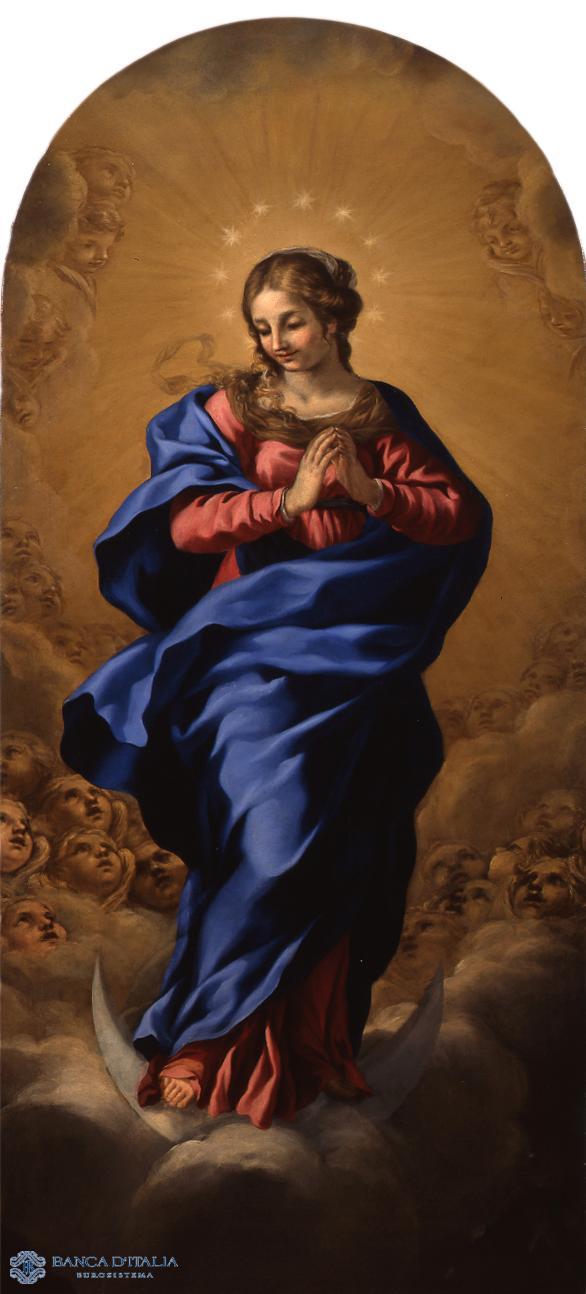The stately figure of the Virgin, wearing a blue cloak and red tunic, stands on a crescent of the moon surrounded by a paradise inhabited by cherub heads. This typical iconography of the Immaculate Conception became popular in the sixteenth century, long before Pope Pius IX proclaimed the dogma of Mary’s conception without original sin. It is inspired by the vision that John the Apostle describes in Chapter 12 of the Apocalypse: the apparition of a woman ‘clothed with the sun’, with the moon at her feet and a crown of twelve stars around her head.
The Baroque grandiloquence of Pietro da Cortona is tempered here by his Roman pupil to produce an elegant and measured interpretation. The original synthesis of elements drawn from the works of Rubens, Guercino and Lanfranco, which the master had put together in the 1630s, was maintained by Ciro Ferri, who was regarded by his contemporaries as the cultural and stylistic heir of the great Tuscan artist. The face of the imposing figure of the Blessed Virgin closely resembles the type of female figure depicted by Cortona, which he derived in turn from a skilled interpretation of the models of Domenichino and, above all, from the pale, plump beauty of Simon Vouet’s female figures.
Ciro Ferri, Immacolata Concezione
Immaculate Conception
17th century AD
Painting
Religious

Artist
Date
Second half of 17th century
Material and technique
Oil on canvas
Measurements
204 x 94 cm
Compiler
Alessandro Zuccari
